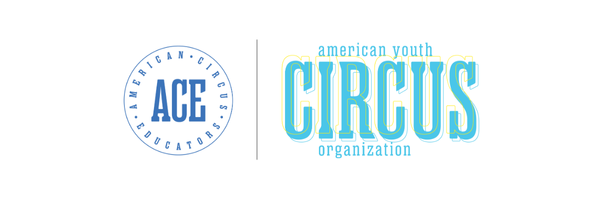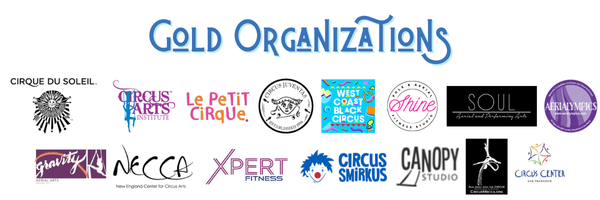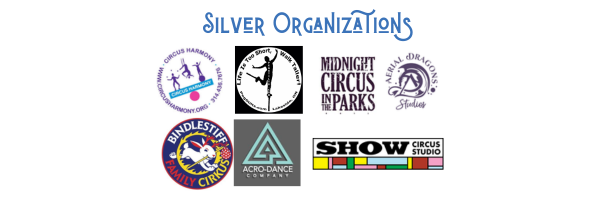I want people to focus on preparing their bodies and developing the strength and flexibility needed before trying tricks. I feel everyone will be better if that’s the mentality. Focus on being good rather than looking good.
INTRODUCTION:
In recent years, circus has exploded in pop culture and training has become more accessible than ever. Social media has played a big part in our ability to share skills, learn new tricks and explore training techniques. However, it can be difficult for students, performers, and teachers to know who to trust, what to trust, and how to realistically set goals. My name is Catie Brier, and I’m a contortion coach based in San Francisco, California. I’ve used Instagram religiously for the past 4 years, specifically as a means to promote and share my work as a coach. In doing this, I have developed strategies for navigating the world of circus training through social media.
I started contortion training when I was 11 after dancing from a young age. At 16, I moved to San Francisco to pursue my dream of becoming a real contortionist. This is when I began training Mongolian contortion under world-renowned contortionist Serchmaa Byamba. Luckily, with a LOT of hard work, everything panned out, and I did become the professional contortionist I dreamed of! I performed for many years, but retired that life 5 years ago to start a family and shifted my focus to teaching.
When I was training, there were certain things that were very unnatural for me, including active leg flexibility, shoulder strength, and the other usual suspects. The Mongolian contortion style I trained under didn’t incorporate much active flexibility, and since my training was before the age of Instagram, I didn’t have resources to learn different techniques to strengthen my body and fill in the gaps in my training. We did lots of repetitions (SO. MANY. HANDSTANDS.) but I still had a hard time with seemingly simple things like having a flat split upside down. There was always this thought that you had to have certain strengths naturally to achieve specific goals. I started coming up with my own exercises without necessarily understanding the science of what I was doing. I approached my training with the idea: “I’m bad at this thing so it must be weak. I’m going to strengthen it.” It started to make a really big difference in my own training, and since focusing my attention on teaching, I’ve developed my own style with active flexibility as a core foundation. My teachings encompass all of the exercises and techniques that I found to be the most effective, which involves a TON of active flexibility and strength work.
As a coach, I want people to focus on preparing their bodies and developing the strength and flexibility needed before trying tricks. I feel everyone will be better if that’s the mentality. Focus on being good rather than looking good. I love what I do. I get to go to work every day and help people achieve their flexibility goals; sometimes just understanding how to square their hips in a split, sometimes sitting on their head. No matter what the students’ goals are, I find great joy in helping them find a way to get their bodies more flexible without injury. Every body is different. Every body needs a different push, a different verbal cue, a different approach. And I find that challenge to be extremely rewarding.
INSTRUCTION:
Every circus student needs a qualified circus instructor. Circus cannot be learned through books or videos or Instagram tutorials alone. Students need the physical check-in with a living coach. Coaches can help correct tiny details, understand how your body moves and what strengthening exercises would be most beneficial for you. They also can help keep an eye on safety while training!
When looking for a good coach, look for one who shares your values. I’m NOT the right coach for everyone, and a good coach should feel comfortable saying that. What matters to you should matter to your coach, especially longevity—after all, you’ve only got one body to work with. A good contortion coach will always make sure their students can do things in the long run, not just push them into things really fast. Contortion students should be clear on their goals and work with someone who can help them accomplish those goals.
Traditionally, Mongolian contortion is passed down from a master teacher to their pupils, who continue to consult their coaches throughout their careers. Even when I was performing, I took regular classes and would always come back to my coach, especially when I wanted to work on new tricks. I would seek out particular coaches to help with the skills that I hadn’t developed yet. This is common practice for many higher-level contortionists. While you can keep developing flexibility on your own and maintain your skills, if you want to get your lever push-up or really any advanced skill, you need a coach who can teach you that technique. Even now, I’m really open about telling my students to go work with other master teachers. I’m comfortable working with my students to develop foundations, handstand variations and shifting in poses. However, if they’re looking to work on mouthpiece, for example, other master teachers can help them get to that level.
It’s important to note that within contortion there are different styles that stem from various cultures. Russian is a little more hardcore in that there are a lot of drills. Mongolian, in my experience, was more about doing the same thing over and over again. It was like, “you do the handstand until you can do the handstand” and that’s just what we did. The newly-developing American style is more where I’m coming from. This style takes a more scientific approach with a focus on body-conscious training. It’s becoming quite popular! Wherever I go, the people I talk to are always trying to be safer and figure out how to make things work better for their bodies instead of mindlessly doing the same drills over and over, which I think is useful and healthy for adults. (Side note: I have no problem doing the same drills over and over, as long as you have a clear purpose and intention in those drills).
If you’re looking for the right things, you can figure out if a coach is quality by looking at their students. If their students look good, are safe, and make progress, then that coach is probably cool. If you hear a coach talking about their teaching philosophy, but then see that it’s actually not the way they teach in class, that’s a red flag. Alternatively, if the students do follow what is said but all have low back (or shoulder, or hamstring) injuries, then clearly that teacher’s method doesn’t work. A quality coach will not simply post their students progress but should be able to describe how and why the student was able to succeed. And hopefully, it relates to what they are teaching!
SOCIAL MEDIA:
Social media has had a huge impact on contortion training, which can be a good and bad thing. Being able to distinguish quality content can (literally) make or break you.
A really cool thing I’m seeing on Instagram is that more adults are realizing they can start training flexibility at any age. Whether they’re working on splits, sitting on their head, or anywhere in between- posting their flexibility journey is really inspiring. I think that’s part of why there are so many yogis who are really famous too, seeing their progress is like seeing the process. It plays into the culture of being more body-conscious and takes out the idea of “oh, this person is just naturally flexible.” I think that’s something people really want that has never really been available—before the age of Insta, you only saw the outcome, in the form of a highly polished act. People support each other over social media. I see a lot of people commenting back and forth who clearly don’t know each other in real life, but they’re encouraging each other and are really supportive—they’ve created a contortion community. When I do the Contortion Intensive at Circus Center, everyone who comes already follows each other and they’re super excited to meet each other after having watched their process and journey. I think it’s great if you can use Instagram to be positive in that way.
Across all cultures, and amplified by the influence of social media, it seems the “master teacher” paradigm is phasing out, and more less experienced people are teaching or coaching. It’s almost as if now anyone can teach flexibility, which is not necessarily great or safe for students. I’m consistently seeing flexibility instructors who don’t have contortion as a foundation, but maybe have natural flexibility or a yoga background, label themselves as a contortion coach. These are the people I see on Instagram teaching chest stand or catch ankles by forcefully pushing someone into the position (which is a HUGE no-no). It’s clear they do not do these tricks themselves, and therefore shouldn’t be forcing others into these positions. You wouldn’t go to someone to learn some crazy aerial drop they’ve never actually done before; contortion should be the same. Students need to make sure their coaches actually have done the skills they’re teaching. Of course, this doesn’t automatically mean they’re a good coach, but it’s better than the alternative!
Another big thing popping up on Instagram now is doing tutorials for tricks, like chest stands, or even “how to get your splits fast”, and it drives me crazy. You can’t give enough information in a one minute video, but people follow the posts anyway. (Side note: there is NO way to safely learn a trick or skill “fast”). If you’re really interested in improving your flexibility, you have to improve the corresponding strength; otherwise, you’re going to injure yourself because you suddenly have a new range of motion that your body doesn’t know how to support. That’s something that the Instagram tutorials never really talk about. Adults should not just be sitting there relaxing, especially if they don’t have the strength to support the stretch and don’t incorporate active flexibility into their training. Relaxing isn’t the point of contortion. It’s not the goal. And the people saying this don’t always know the difference, which is why I’m trying to constantly clarify with #notyoga.
I see a lot of these tutorials coming from the yoga community, and while I have no issue with yoga, it is not contortion. Yoga is not performance centered; rather a means to help prepare the mind and body for a spiritual practice. The mentality behind performance and spirituality is not the same at all. A Mongolian contortionist will train 8 hours a day doing heavy endurance and strength work with a flexibility component. You come to contortion class with a different mindset. I actually have a lot of students who come to me from yoga; they feel like they’ve reached a wall with yoga and how far they can push their flexibility, and as they train contortion they quickly realize they are two separate practices. While it’s safe and healthy to practice both contortion and yoga, learning any extreme skill from social media is not a good idea.
“Information” on Instagram also drives me crazy because there are so many people who don’t really know what they’re talking about, but say “here’s a fact!”, and people will listen because they just don’t know better! Someone might say, “this exercise is to strengthen your glutes in a backbend” and then I’ll look at the exercise and see that it’s actually all low back. I constantly fact check with Dr. Jen Crane, my physical therapy resource, who I am SUPER lucky to have in my life. Jen lets me know when Instagram posts are full of misinformation because sometimes it can be really hard to tell fact from fiction. There’s a trend of people without formal education in anatomy, biomechanics, and physiology using technical terms for muscles and body parts—and typically, using them incorrectly. Since these people speak using big words it creates the illusion of authority. This can make it even harder to distinguish quality from lies unless, of course, you have your own personal @cirque_physio!
It’s important to point out that you have control over the content you see on Instagram. If you want to watch more safety-oriented content, you can! It’s easy to get sucked into just watching people do high-level tricks and then try to copy them without learning the safety and base of it; but the thing to keep in mind is that proper flexibility training, thinking about longevity and developing strength, results in tricks as its outcome, not the other way around. Instagram can perpetuate a mentality that you need to do high-level tricks to get more flexible and I 100% disagree. It’s really important for students to develop strength and flexibility. Once you have those the trick comes naturally and this is what I do in my classes. For some students it’s a month of preparation, for some it’s a year, but after training properly they can do the trick! They’re safe and they can breathe, they’re flexible, strong, and can get in and out without pain or issue. It’s a bonus that in the prep work for tricks, my students learn to understand the signals their bodies are telling them, and that leads to overall safer training. Obviously, every coach has different methods, but I’m concerned with the Instagram mentality that gets people to keep trying tricks that their bodies are in no way prepared for. This is why it’s important to adjust and feed your stream with people whose posts focus on progressing safely.
PHYSIOFLEX:
Being able to learn safe flexibility practices and all that comes along with it, is something that should be available anywhere in the world. But realistically, it is hard to come by highly qualified, knowledgeable coaches, which is why PhysioFlex was created.
Before I started working with Jen, I knew how to do things but didn’t really know what muscles were supposed to be activating, but I understood the importance. So when I started working with her, I’d tell her “hey, I think if you do this, it will let you do this other thing better”, and she would tell me the science behind it. This happened week after week until one day Jen proposed that we work together. We started developing our PhysioFlex curriculum, and here we are today! The PhysioFlex method is a combination of performing arts-specific injury prevention, active flexibility, nervous system training, and targeted stretching. We purposefully designed it to address all potential structures that limit flexibility so that students can be sure that they’re being as safe and effective as possible. If you start out training your muscles in this way and develop that level of understanding and awareness in your body, your training will have longevity.
As a community, we need to let go of the idea that your back should hurt in contortion, that contortion hurts, or that low back pain is normal. Discomfort? Difficulty breathing? Ok. But you should never have a sharp pain, nothing should ever pull you, and there shouldn’t be “crunching” sensations. There are so many times where we’ve helped people realize that, for example, their back isn’t working because they weren’t using their shoulders correctly; they couldn’t even think about it because of back pain. Low back pain is normal, but it shouldn’t be. This is why I believe that what Jen and I are doing is invaluable to the circus and performing arts communities. No matter what level you’re at, or what you perform, it’s going to help.
Catie Brier (@catie.brier.contortion) is a contortion coach based in San Francisco, and is perhaps the most prominent contortion coach on social media, with over 37,000 followers. She hopes contortionists will learn to prioritize skill over tricks. She can also be found at www.catiebriercontortion.com. Her Physioflex program with Jen Crane can be found at www.physioflexsf.com or @physioflexsf.
Click here to see this article in its full glory in the gorgeously designed Spring 2018 Issue of ACE Digital Magazine.


